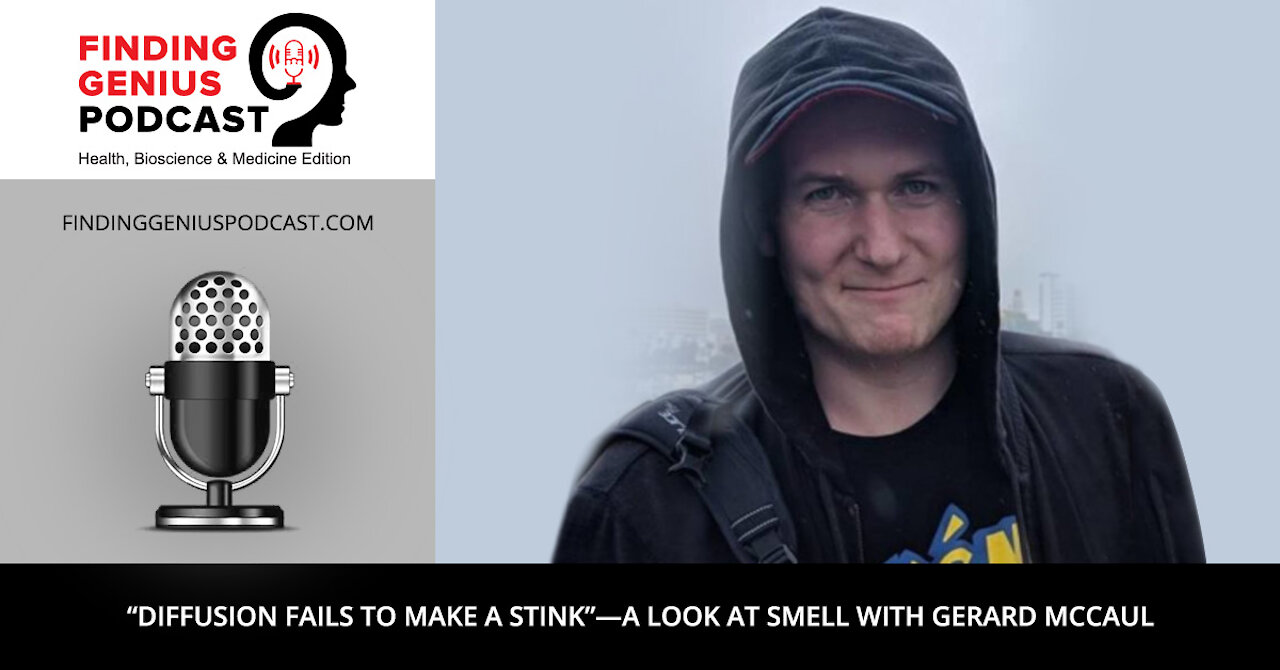Premium Only Content

“Diffusion Fails to Make a Stink”—A Look at Smell with Gerard McCaul
Where is that smell coming from?! It’s a question we’ve probably all exclaimed before tracking down the culprit…whether or not we want to. Scent detection is an important ability, but do we really understand how it even works?
Press play to discover:
How jet streams and the movement of people and animals through the atmosphere influence our sense of smell
How a better understanding of scent dispersal and detection could aid in the development of olfaction-based technologies
What reality would be like if it matched up with simple mathematical models of scent detection
Gerard McCaul is a postdoctoral research fellow at Tulane University who's taken on a side project on olfaction—the sense of smell.
He set out to determine what really enables scent tracking, and whether simple mathematical models, such as a pure diffusion model, can really account for it.
Unlike hearing and sight, the sense of smell is not well understood or described by mathematical modeling; diffusion simply can’t explain the ability to detect and track down the source of odors.
In fact, McCaul explains that, in order to find the source of an odor in a diffusive model, we’d basically have to be right on top of it. Clearly, this doesn’t match up with reality—with a dog’s ability to track scents located miles away, with a shark’s ability to detect a drop of blood in a great body of water, or with our own ability to, for example, follow the scent of freshly-baked cookies to the bakery a block or two away.
So, what gives?
McCaul sheds light on the absolutely necessary atmospheric and environmental pieces to the puzzle of scent tracking.
Tune in for all the details, and check out the paper on the topic, titled “Diffusion Fails to Make a Stink”.
Episode also available on Apple Podcasts: apple.co/30PvU9C
-
 0:37
0:37
FGP
9 days ago🔋 Unlocking Natural Sources Of Lithium 🌱💧
431 -
 2:11:20
2:11:20
I_Came_With_Fire_Podcast
17 hours agoFar Left TROJAN HORSE | SPECIAL Forces in MEXICO | GERMANY under FIRE
29.3K13 -
 1:41:00
1:41:00
Darkhorse Podcast
15 hours agoIf Only We’d Known: The 265th Evolutionary Lens with Bret Weinstein and Heather Heying
170K40 -
 1:58:29
1:58:29
Conspiracy Pilled
3 days agoThe Vaccine Conversation (S5 - Ep17)
74.8K2 -
 11:22
11:22
Tundra Tactical
11 hours ago $4.41 earnedUSA vs Canada HOCKEY Fight: The Real PRIDE Fighting.
73K10 -
 54:43
54:43
LFA TV
1 day agoWhy Exposing Waste and Fraud Terrifies the Beltway | TRUMPET DAILY 2.19.25 7PM
66.6K10 -
 1:01:13
1:01:13
Candace Show Podcast
13 hours agoBlake Lively's BOMBSHELL Legal Filing | Candace Ep 149
137K157 -
 1:11:22
1:11:22
Vigilant News Network
16 hours agoElon Musk Shuts Down RFK Jr. Critics With One Powerful Statement | The Daily Dose
89.2K30 -
 1:12:23
1:12:23
Dad Dojo Podcast
1 day ago $2.64 earnedEP20: The Super Bowl and Solving The Economy
52.1K -
 4:49
4:49
Tactical Advisor
3 days agoBest Small Handgun Optics | CH PWS Shot Show 2025
36.5K2